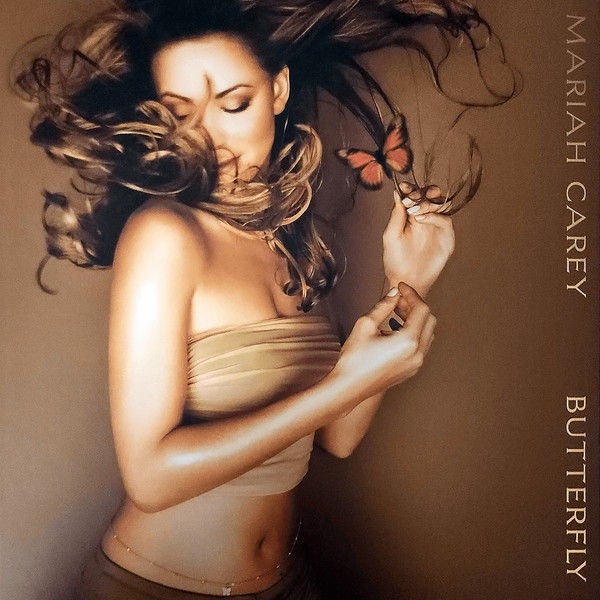Mariah Carey, often dubbed the “Songbird Supreme,” is one of the most influential artists in modern music. Among her countless chart-topping hits and acclaimed albums, Butterfly stands out as a turning point in her career. Released in 1997, this album marked a period of personal and artistic transformation, showcasing Carey’s depth and cementing her legacy as a trailblazer in blending genres. Let’s dive into why Butterfly is more than just an album—it’s a declaration of independence and artistry.
The Journey to “Butterfly”: Breaking Free

By the mid-1990s, Mariah Carey had already achieved global superstardom. With multiple Grammy Awards and a string of chart-topping hits under her belt, she was the reigning queen of pop. Yet, behind the glittering façade, Carey was yearning for creative freedom. Much of her early career was heavily influenced by her then-husband and producer, Tommy Mottola, who controlled her artistic direction.
Butterfly became Carey’s emancipation. It marked her decision to step away from Mottola’s grip and explore themes of independence, self-discovery, and vulnerability. The album’s title itself—a symbol of transformation and freedom—reflected Carey’s newfound resolve to chart her own path.
A Bold New Sound: Exploring R&B and Hip-Hop
Butterfly represented a seismic shift in Mariah Carey’s sound. While her earlier albums leaned heavily on pop ballads and adult contemporary hits, this record embraced R&B and hip-hop influences. Carey had long admired these genres, and now she had the freedom to fully integrate them into her music.
The album’s opening track and lead single, “Honey,” exemplifies this evolution. Produced by Sean “Puffy” Combs and The Hitmen, the song’s infectious blend of pop melodies and hip-hop beats was groundbreaking. Featuring a sultry delivery and a playful music video, “Honey” became an instant hit, topping the Billboard Hot 100 and showcasing a bolder, more confident Carey.
Songs like “The Roof (Back in Time)” and “Babydoll” continued this exploration of R&B and hip-hop, with intricate production and sultry undertones that set the stage for modern pop’s crossover into urban sounds.
Heartfelt Ballads: Showcasing Vulnerability
While Butterfly pushed boundaries with its innovative production, it also stayed true to Carey’s roots with a collection of deeply emotional ballads. The title track, “Butterfly,” is a soaring ode to love, letting go, and personal growth. Its lush orchestration and heartfelt lyrics resonated with fans, many of whom connected with its themes of vulnerability and transformation.
Another standout ballad, “My All,” blended Latin-inspired melodies with Carey’s signature vocal runs. The song, which expresses longing and devotion, became a global hit, further cementing her reputation as a vocal powerhouse.
Tracks like “Close My Eyes” offered a raw glimpse into Carey’s struggles with fame and personal hardship, while “Whenever You Call” highlighted her unparalleled vocal ability to convey deep emotion. These songs not only showcased her technical skill but also her willingness to open up and share her journey with her audience.
Collaborations That Redefined Pop Music

A hallmark of Butterfly was Mariah Carey’s collaboration with some of the most prominent producers and artists of the time. Working with Sean “Puffy” Combs, Jermaine Dupri, Missy Elliott, and Walter Afanasieff, Carey was able to experiment with different sounds while maintaining her signature style.
One of the most notable collaborations came on the remix of “Honey,” which featured Ma$e and The LOX. This partnership helped bridge the gap between pop and urban music, a trend that Carey would continue to pioneer in her future projects. The inclusion of hip-hop elements on Butterfly wasn’t just a creative choice—it was a bold move that reshaped the music industry.
Lyrical Themes: Freedom, Love, and Growth
The lyrics on Butterfly are some of Carey’s most personal and introspective to date. Songs like “Close My Eyes” reflect her inner struggles and growth, while “The Roof (Back in Time)” paints a vivid picture of a romantic memory with poetic precision. These tracks resonated deeply with listeners, offering a rare glimpse into Carey’s inner world.
The recurring themes of freedom and transformation permeate the album. Whether she’s singing about letting go of a love that no longer serves her or embracing her independence, Carey’s lyrics are a testament to her resilience and self-awareness. Butterfly isn’t just an album—it’s a narrative of her journey toward self-discovery.
Critical and Commercial Success

Upon its release, Butterfly was met with widespread critical acclaim. Reviewers praised Carey’s artistic growth and her willingness to take risks. Rolling Stone described the album as “a game-changer,” while Entertainment Weekly lauded its sophisticated production and emotional depth.
Commercially, Butterfly was a massive success. It debuted at No. 1 on the Billboard 200, earned multi-platinum certification worldwide, and produced multiple hit singles, including “Honey” and “My All.” The album’s success solidified Carey’s status as one of the most dominant forces in the music industry.
The Legacy of “Butterfly”

More than two decades later, Butterfly remains a cornerstone of Mariah Carey’s career and a defining album in the evolution of pop and R&B music. Its innovative production, heartfelt lyrics, and genre-blending sound have influenced countless artists, from Beyoncé to Ariana Grande.
The album also marked the beginning of Carey’s journey toward greater creative autonomy—a theme that continues to shape her work today. By taking control of her narrative and embracing her true self, Carey set a precedent for artists seeking to break free from industry constraints.
Conclusion
Mariah Carey’s Butterfly is much more than a collection of songs—it’s a testament to her resilience, artistry, and ability to evolve. By blending genres, embracing vulnerability, and taking bold creative risks, Carey created a masterpiece that continues to inspire and resonate with audiences worldwide.
This album isn’t just a chapter in her career; it’s a symbol of transformation and freedom. With Butterfly, Mariah Carey proved that she’s not only a vocal powerhouse but also a visionary artist unafraid to push boundaries. Over two decades later, its impact remains as powerful as ever, solidifying its place as one of the greatest albums of all time


